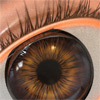- Fri Jul 01, 2005 4:03 pm
#41695
_Mike
For the reasons I explained. You can't do metal paint flakes yet - we don't have an "anisotropic direction" map (anisotropic reflections don't even work yet) and there isn't a way to have a color ramp based on fresnel's equations. For example, a surface is green when you look right at it, but turns blue as the angle to camera increases. A lot of automotive paint (R2's in particular) does this... goes from a bright blue to a deep purple/black in the "flash". It also requires a separate, glossy topcoat. This is silly to do with geometry - a layered shader is all it takes, which Maxwell can't do yet. Plus, you can't do R2's aluminum properly without anisotropic reflections, which aren't working. You also can't do the proper SSS for his flashing displays with the current setup. Eventually, all this may be possible.Adam Trachtenberg wrote: btw, I don't see why you couldn't render your r2-d2 with existing shaders.
_Mike





 - By Mark Bell
- By Mark Bell - By Edward Leibnitz
- By Edward Leibnitz